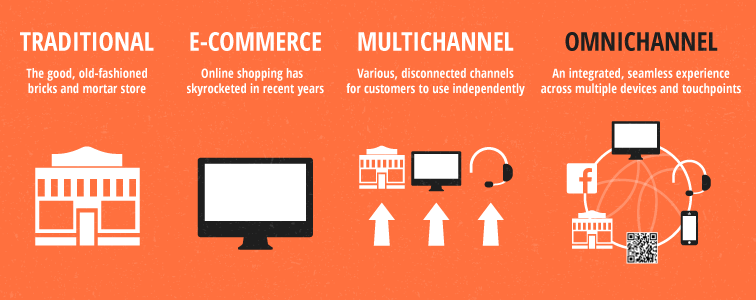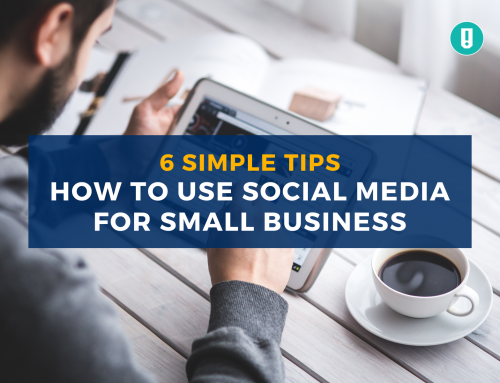
Brands with top class Omni-Channel customer engagement retain 89% of their customers on average, compared to just 33% for companies with weak Omni-Channel customer engagement. That 3x difference could make or break a business.
However, the case for going Omni-Channel is not that clear cut. Yes, you will give your customers a very different (hopefully improved) experience of how they connect with you and your revenue figures should get a boost as a result, but it could also significantly increase your operational costs.
Before we dive in and look at the intricacies and hopefully help you decide which is best for your business, we’ll start with defining what they are and how they differ.
Difference Between Omni-Channel and Multi-Channel
The main differentiator between Omni-channel and Multi-Channel is how the customer experience is linked digitally.
Multi-channel is when multiple sales and marketing channels (i.e. online store, social media, bricks and mortar) are available to the consumer but work independently of each other.
Multi-channel is very similar to those “Choose your adventure” books. It allows consumers to choose how and where they engage with your brand for purchases or browsing. However, from a business perspective, multi-channel is less integrated and can be difficult to track performance.
Organizations that choose a multi-channel approach create strategies for each channel that include separate reporting structures and revenue goals. These strategies focus on maximizing the performance of each channel and often generates the challenge as to which channel(s) a corporation should focus on (Basically, multi-channel makes companies choose their favorite child and let the others compete.)
Omni-channel, on the other hand, creates a brand that doesn’t choose favorites. An omni-channel experience is well integrated and gives your brand an omnipresent feel. Sales and marketing efforts from multiple channels are connected technically and operationally to create one experience for customers across your brand.
For example, the consumer will be able to use discount codes published on social media in one of your stores. Another example would be the customer completing a purchase online and joining your Facebook Community immediately afterward.
The strategies designed within an omni-channel approach focuses on customer experience to create a complete package.
Unlike the multi-channel “choose your adventure” approach, omni-channel strategies recognize that customers have the ability to use multiple channels quickly and simultaneously. This recognition allows omni-channel marketing efforts to create a stronger, more personalized relationship with the consumer while keeping all channels connected.
Understanding & Improving the Consumer Experience
To decide whether your brand is (or will be) omni-channel or multi-channel, you will want to define the consumer experience you wish to create.
When considering the type of experience you want to offer, think about your target audience, the type of experience they will expect, and how you can exceed that. This will help you determine if your brand is (or will be) omni-channel or multi-channel.
When meeting with your strategy team, some questions to ask to determine your direction can be:
- Are you able to capture and blend all user activity as they browser multiple channels?
- How will your company discover customer struggles and understand experiences (such as low engagement, bad reviews, or cart abandonment?) How will you capture that information?
- Do you have the ability to gain a real-time view of your brand including engagements, revenue, and transactions? How do you wish to achieve this?
- Are you able to deliver a view that is quantifiable by incidents to prioritize efforts?
- Will your analytics team be able to show you what areas your brand needs to improve to understand how to increase engagements and conversions?
By identifying your brand’s capabilities and direction of the consumer experience, you will be able to build strategies that will fit your target audience.
Examples
Disney is an excellent example of a company who understands the consumer experience. Their entire brand is omni-channel with a heavy focus on customer centricity. For example, as soon as you walk through the gates, they give kids the opportunity to play a digital scavenger hunt game. This strategy helps their corporate teams to understand child interests, where they travel throughout the parks and connects them other shopping options.
Another examples is luxury retail chain Neiman Marcus that went to great lengths to make its omni-channel experience as seamless as possible. They focus a great deal on giving a personalized experience to their customers and get a little bit “smarter” every time one of their customers connects with them digitally.
For example, if a customer repeatedly searches for size 9 or 9.5 shoes or Medium-sized T-Shirts the data will be stored together with their geolocation so they will only be shown those sizes in local stores next time they search. Pretty smart right?
They also use their geolocation data obtained from mobile visits to their site to provide their customers info on local events or new arrivals for clothing lines the customer has expressed interest in. These are all included in automated email and direct mail campaigns.
Identifying the Better Strategy For You
A clear strategic decision needs to be made before going down one route or the other although most business will tend to just evolve into multi-channel without any clear research into alternatives.
If your brand chooses a multi-channel approach, your strategies will be more traditional. Every channel will have its consumer data that is not shared across channels. Your organization will have to compile information from multiple sources, such as websites and brick and mortar stores, to identify how well each channel is performing. Since this approach is not well integrated, it will be harder to identify if your customers are shopping at multiple channels.
This approach is great if your brand doesn’t have many channels and doesn’t plan to expand in the future. However, if your long-term goal is to add channels, multi-channel is often not the best strategy.
Omni-channel, on the other hand, is perfect for brands who have multiple channels and wish to continue improving upon the consumer experience and average revenue per consumer. Be warned though, it will take time, money and a wise marketing brain to set it up. This strategy takes more upfront preparation to effectively collect and react to consumer data, but it is worth it in the long run.
Kelly Davidson is a writer at Merchant Savvy, a site helping small business owners run their marketing and retail operations. She is currently focused on mobile commerce.





Leave A Comment